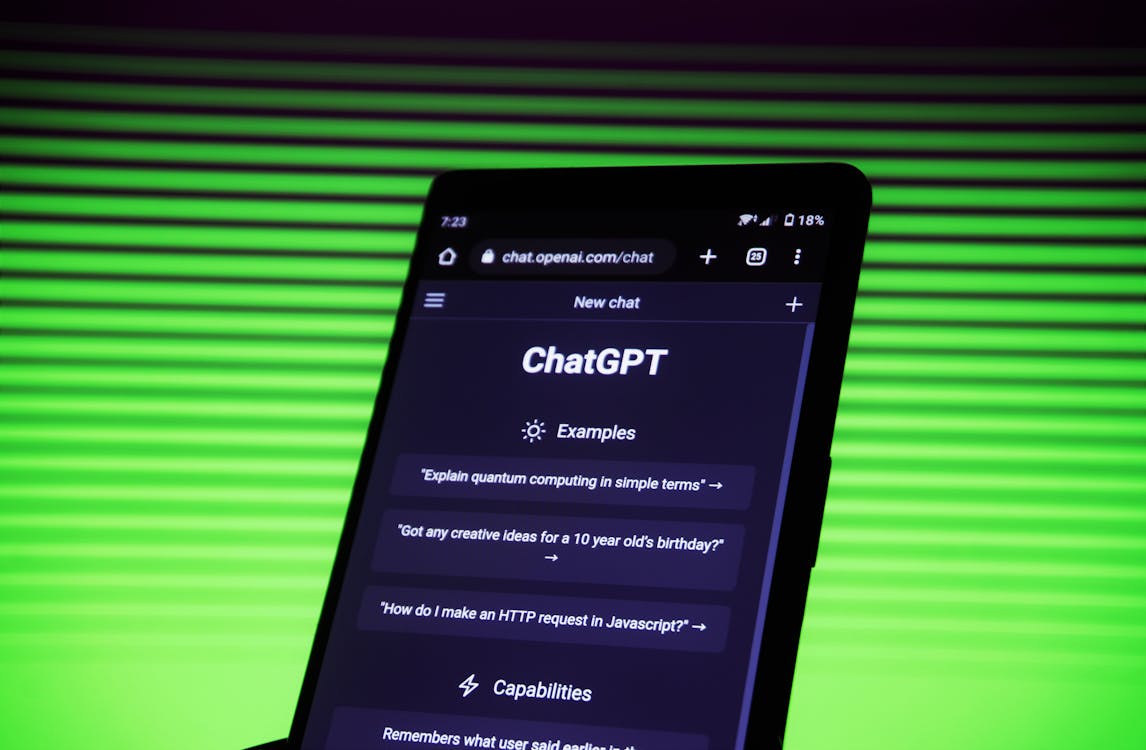

 This file is licensed under the Creative Commons Attribution-Share Alike 4.0 International license. Author: The Original Benny C
This file is licensed under the Creative Commons Attribution-Share Alike 4.0 International license. Author: The Original Benny CFrom Deakin University Library's Guide "Using Generative AI":
Text content creation:
Image content creation:
Sound content creation:
Coding creation:
Video creation:

From the Brandeis University Center for Teaching and Learning: "ChatGPT is an artificial intelligence (AI) tool that can produce clear, coherent, human-like text and computer code in response to a question or prompt submitted by a user. ChatGPT is the latest chatbot developed by the company OpenAI..."
Quick Links:
Gen AI for the Genome: LLM Predicts Characteristics of COVID Variants
An Opinionated Guide to Which AI to Use: ChatGPT Anniversary Edition
Collective Constitutional AI: Aligning a Language Model with Public Input
GPT-4 Can Already Pass Freshman Year at Harvard
What Are ChatGPT and Its Friends? Opportunities, Costs, and Risks for Large Language Models
What Is ChatGPT Doing … and Why Does It Work?
Here is an excellent link found by the STEM Club for Girls at Fullers Library! It is a great overview of Ai Terms.
Artificial Intelligence (AI): A field of study within computer science, focused on the development of computer systems that can accomplish tasks typically associated with human intelligence. These tasks include speech recognition, route mapping, decision making, etc.
Bias: The training data of an AI model can skew the output, leading it to generate inaccurate or offensive material.
Chatbot: A program designed to communicate with humans in a natural manner, sometimes to facilitate providing information or completing tasks.
Chat Generative Pre-trained Transformer (ChatGPT): A chatbot developed by OpenAI. ChatGPT is a transformer type of AI that is designed to mimic conversations using natural language processing, through which users can write prompts to generate text-based responses.
Generative AI: A model of artificial intelligence that can generate new content such as text, images, video, etc., through pattern recognition, by examining large amounts of training data and creating material that contains similar characteristics to identified patterns in the dataset. Examples include ChatGPT, Claude, Midjourney or DALL-E.
Hallucinations: Instances where a generative AI model generates output that contains inaccurate or irrelevant information, especially when it may look correct. For example, when asking ChatGPT (or any text-based generative AI) to generate a list of citations for a topic, the citations it provides may look accurate but the source material associated with the citation may not actually exist when searching for it.
Large Language Model (LLM): An AI model that receives large amounts of training data that establishes the capacity for it to respond to conversational queries. AI such as ChatGPT, Bard, or Claude use LLM.
Natural Language Processing (NLP): The programmed capacity to understand conversations and respond in kind.
Prompt: A structured text-based query that asks a generative AI to generate new content in the form of text, image, video, etc.
Prompt Engineering: The process of refining prompts to elicit more desirable results from generative AI.
Training Data: The development of a generative AI model involves the input of specific types of data, often in large amounts. This process is referred to as “training” and it determines the content output of the specific model. For example, if developing an AI that reviews artwork specifically, the AI model will be trained only on data containing artwork.
This glossary is an adaptation of the following sources: Generative AI as a Research Tool from Brown University and Librarians Can Play a Key Role Implementing Artificial Intelligence in Schools from School Library Journal.